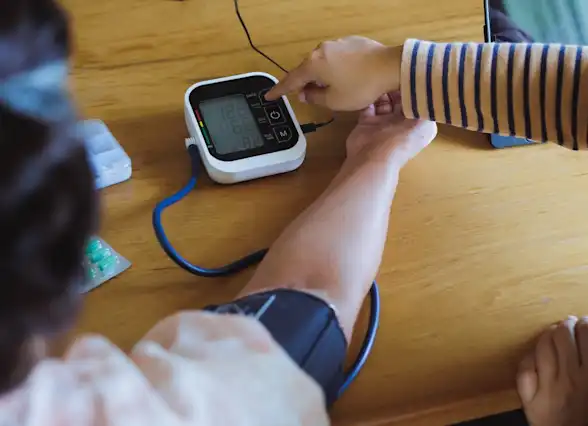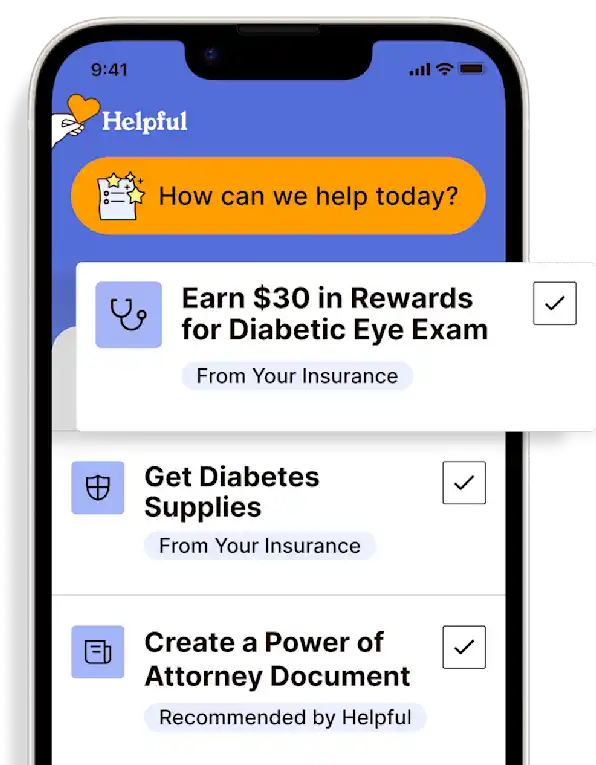Taking Blood Pressure Correctly
Demonstrate you know how to take someone's blood pressure correctly and then help them learn to do it for themselves.
Get insurance benefits, legal documents, and medical records in one place

This task follows the Watch One, Do One, Teach One approach.
AUTOMATIC blood pressure cuff
Watch One: Mayo Clinic - Video on Automated/Digital Cuff
Do One:
Ensure that your blood pressure cuff is in proper working order. No leaks, and all readouts function.
Ensure the arm cuff is the correct size (Sm, Reg, Lg, XL). Wrist cuffs are typically one size fits all.
Have the person finish eating or drinking, and remove chewing gum or candy.
Ensure that they are sitting comfortably. Legs uncrossed, feet flat on the ground.
Ensure the arm is at heart level (slightly below is fine). Rest it on the arm of the chair or use a pillow to prop it up.
Place the cuff firmly (not tightly) on bare skin (not over clothing), about 1 inch above the bend of the elbow. If using a wrist cuff, about 1 inch above the hand.
Important! DO NOT take blood pressure in a restricted limb (due to dialysis access, mastectomy, fracture, recent surgery, etc.).
Instruct the person to breathe normally and avoid talking or coughing during the reading.
It may be necessary to remind them that the cuff will inflate and feel very tight around their arm but the pressure will not last long.
Turn the power on and press the start button to begin the reading.
If the cuff deflates and begins to inflate again, assure them that this happens occasionally to get an accurate reading.
When the blood pressure cuff indicates that the reading is finished, record the readout.
Repeat this process once daily, unless otherwise directed by a healthcare provider, at varying times each day rather than the same time.
Teach One: Guide the person through these steps so they can take their own blood pressure. Then, have them demonstrate it back to you without assistance.
MANUAL blood pressure cuff
Watch one: Mayo Clinic - Video on Manual Cuff
Do One:
Follow steps 1-8 above.
Place the stethoscope buds in your ears and place the diaphragm (large disc) in the bend of the person's elbow, below the cuff. Do not begin until you can hear their pulse through the stethoscope. Move the diaphragm around slightly until it's audible. Once audible, hold the diaphragm in place with your non-dominant hand.
Ensure that the numbered dial is somewhere you can see it and won't slip.
Make sure the valve on the ball pump is closed and begin to pump with your dominant hand, inflating the cuff. Watch the needle on the dial start to climb as the cuff inflates.
Inflate the cuff until you can no longer hear the pulse and remember the number on the dial when it first disappeared. (Stop inflating!) This is the systolic, or top, number.
Without moving anything except your dominant hand (or fingers), slowly turn the ball pump valve, gently letting air out of the cuff. Watch the needle start to drop as the cuff deflates.
Listen for the sound of the pulse to return and remember the number on the dial when you first heard it again. Note that the needle on the dial may begin to bounce before you hear the pulse return. Ignore the bounce and only listen for the sound. This is the diastolic, or bottom, number.
Once the pulse is audible again and you note the number, you can release the valve completely and let all the air out of the cuff.
Remove the cuff and record your numbers.
Repeat this process once daily, unless otherwise recommended by a healthcare provider, at different times. Do not take blood pressure readings at the same time every day.
Teach One: Assist another family member, friend, or neighbor in following these steps to measure the person's blood pressure. Then, have them demonstrate it back to you without assistance.
Note that it is very difficult (and for most - impossible) for someone to take their own blood pressure with a manual cuff. So, while you may teach them the process so they can help others take their blood pressure, they are not learning to do it by themselves.
Get more support and guidance on insurance benefits, medical records and legal forms.
Helpful brings together your insurance benefits, legal documents, and medical records in one personalized place — so you always know what you have, and never have to search again.

Technology for Health Tasks. Mental Health for the Tough Stuff.
Helpful connects your medical records, insurance, and caregiving tasks automatically. And when you need more than logistics, a therapist is here to guide you.
In-Network and Covered
For Individuals, Couples and Families
HIPAA Compliant, Data Stays Private


Healthcare Tasks Simplified

From syncing records to spotting drug interactions, Helpful does the heavy lifting, turning complex health info into clear tasks and showing you benefits you can actually use, giving you clarity and control over your care.

In-Network Mental Health

Our licensed therapists are here to support you and your loved ones through stress, burnout, and life’s hardest moments, with an inclusive, compassionate approach that works with most insurance plans.

Create Legal Documents

Plan ahead by creating will, trusts, advance directives and more, that ensure your wishes are honored in the event you can’t speak for yourself -with Helpful guiding you every step of the way.